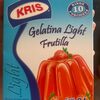E123 - Amaranth
Functions: Colour
Amaranth, FD&C Red No. 2, E123, C.I. Food Red 9, Acid Red 27, Azorubin S, or C.I. 16185 is a dark red to purple azo dye used as a food dye and to color cosmetics. The name was taken from amaranth grain, a plant distinguished by its red color and edible protein-rich seeds. Amaranth is an anionic dye. It can be applied to natural and synthetic fibers, leather, paper, and phenol-formaldehyde resins. As a food additive it has E number E123. Amaranth usually comes as a trisodium salt. It has the appearance of reddish-brown, dark red to purple water-soluble powder that decomposes at 120 °C without melting. Its water solution has absorption maximum at about 520 nm. Like all azo dyes, Amaranth was, during the middle of the 20th century, made from coal tar; modern synthetics are more likely to be made from petroleum byproducts.Since 1976 Amaranth has been banned in the United States by the Food and Drug Administration -FDA- as a suspected carcinogen. Its use is still legal in some countries, notably in the United Kingdom where it is most commonly used to give Glacé cherries their distinctive color. - Wikipedia
EFSA evaluation: Scientific Opinion on the re‐evaluation of Amaranth -E 123- as a food additive (2010/07/26)
To evaluate your exposure to the E123 - Amaranth food additive, you can browse our list of products that contain it. See the list of
-
Amaranth - Bio DM - 500g

-
Mais-Amaranth-Waffeln gesalzen mit Reis & Leinsamen - Bio DM - 110g

-
Gelatina Cereza - Ser - 105 g

-
Tarama Dip - Gaganis

-
Rice crackers - Meijer

-
Hershey's Mini Kisses Ice Cream - Selecta - 1.3 li

-
Selecta Bestsellers Rocky Road - Unilever RFM - 1.3 li

-
Aquarius - 300 ml

-
Sorvete Napolitano - Gemelli - 2l

-
Aquarius Pomelo - 3 l

-
Raspberry Flavoured Premium cordial - Schweppes - 750mL

-
Sour Feijoa Sweets - Mayceys - 85 g

-
Chocofi - Dan Eric's Grand Ice Cream - 1.89li

-
Rellenas sabor a frutos del bosque - Terepin - 300 g

-
Sour Fruit Mix - Mayceys - 85 g

-
Crocodiles - Mayceys - 90 g

-
100s & 1000s - Dollar Sweets - 190g

-
Wine Gums - Mayceys - 85 g

-
Mixed fruit candies
-
Whey protein bar - Mervick Lab - 65 g

-
Pasito

-
Choc bars - Bulla

-
Yogurt mora Celema - 1 L

-
Butter Biscuits - Balksen - 100 g

-
Joghurt-Heidelbeer-Müsli - Schogetten - 100g

-
tonic vitamin

-
cruiser spritz - Vodka Cruiser
-
Breezer Watermelon - BACARDI - 275ml

-
Chicha Morada - Real - 14 g

-
Gelatina de Pata en Polvo - Dely - 120 g

-
Come Come - La Estrella - 18 g

-
Refrigerante de Guaraná Sabor Framboesa - Cini - 600 mL

-
Liqueur Frizz saveur fruits passion 15° - U - 70 cl

-
bebida isotónica - santé sport - 500 ml

-
emeth - 420 g

-
gelatina sabor frutilla - dia - 50 g

-
Puro frut - Purita - 120 ml

-
gelatina ligt - ravana - 25g

-
Brioche aux pralines pur beurre, le paquet de 400 g - Valtitude
-
ravana postre sabor vainilla - 120 g

-
mousse crème sabor a chocolate nougat - exquisita - 95 g

-
gelatina - exquisita - 1

-
Punch Goyavier Banane - Chatel - 70 Cl

-
vodka cruiser
-
Gelatina Light Frutilla - Kris - 24 g

-
Ilfrut sabor Manzana - 120 ml

-
gelatina sabor frutilla - 50 g

-
-
stargifts
-
mirinda naranja

-
Choo Choo bars
-
choc jewels
-
Raspberry Flavoured Soft Drink - Value - 1.5 L
-
Gelatina sabor a cereza - Godet - 30 g

-
gelatina frambuesa - Bárbara - 40 g

-
pepas sabor frutos del bosque - Vea

-
Cc Dry

-
Flan sabor dulce de leche - ravana

-
big foot pop
-
Escama Flan vainilla - ravana

-
Zooper dooper
-
CormilloT arándanos Light - Dulcor - 390 g

-
Gelatina sabor a Frambuesa - Kris - 250 g

-
Magic 100's & 1000's - Dollar Sweets
-
donitas limon y sal
-
Tang Mixed berries - 20g

-
Calippo Minis Tropical 10 Pack - Streets - 575ml 10 Pack

-
Super Frut Uva - AV - 200 ml

-
miettes de thon - leader price - 104g

-
Tuyo sabor Mocochinchi - 20 g

-
Gelatina - BC - 20 g

-
Yogurt - Purita - 2 l

-
Tripple Smoked Ham
-
rasberry - Schweppes

-
Helado sabor frutilla - exquisita - 52 g

-
Manaos Naranja - 2,25 l

-
Gelatina sabor Frambuesa - Exquisita - 40 g

-
Bols Advocaat - 70cl

-
buddies
-
streets
-
smyths - 1 kg
-
Sabor Frutilla - Drink - 80 ml

-
obleas rellenas sabor frutilla Dia

-
raspberry soda - schweppes

-
Helado Premium Nordland - 1000 ml

-
Postre de Chocolate light - Exquisita - 65g

-
Gelatina Royal manjares light - 25g

-
Apple, Orange & Mango Fruit Drink - Keri - 3 l
-
Brown Rice Crackers - Wegmans - 4 oz

-
Crispy fingers - Gardein
-
la mix
-
Gelatina Exquisita - 40 g

-
-
Calippo raspberry pineapple - Streets

-
Gelatina sabor a Frutilla - Kris - 250 g

-
chips
-
Orchard fruits - Kiwiland - 300 g
-
Keri Apple Juice - - 3 l

-
Sex on the beach
-
Fruit mélangés dans une gelée aromatisée à la cerise - Dole

